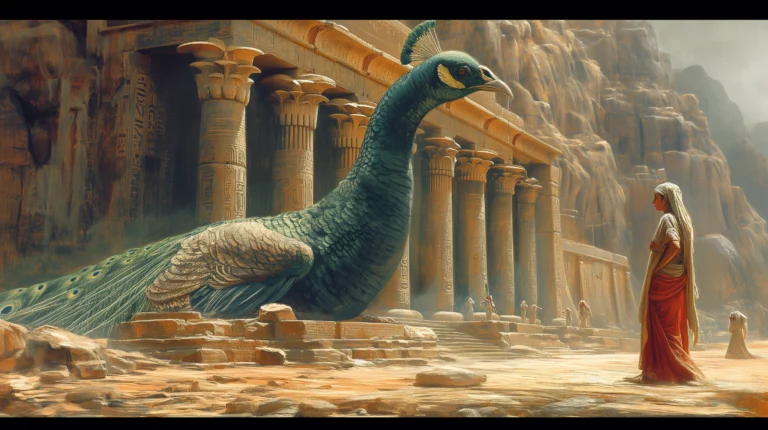Child of the Cosmos: The Dance of Becoming
Child of the Cosmos
The Dance of Becoming
Introduction
Self-actualization and self-realization are often used interchangeably, yet they are distinct stages in the journey to personal mastery.
Self-actualization is a process of reaching one’s full potential as an individual, while self-realization goes beyond individuality, recognizing the unity with the essence of all existence.
As Nietzsche said,
“One must still have chaos in oneself to be able to give birth to a dancing star.”
To reach self-realization, one must first engage deeply in the journey of self-actualization, embracing the chaos within as a source of growth and transformation.
Defining Self-Actualization
Self-actualization is the process of fulfilling one’s potential. It involves discovering and developing talents, strengths, and passions while living authentically and purposefully.
Living authentically and purposefully means embracing and expressing your unique truth without conforming to external expectations or illusions.
It requires courage to pursue what resonates with you deeply, beyond societal standards or fleeting trends. As Jean-Paul Sartre observed,
“Man is condemned to be free; because once thrown into the world, he is responsible for everything he does.”
In other words, your truth is yours alone to define and embody. This journey demands that you choose your path with intention, realizing that your actions, values, and passions are expressions of your own existence, not the projections of others.
Living purposefully is to live in alignment with this inner truth, creating a life that feels inherently meaningful and aligned with who you truly are.
Self-actualization is the awakening of the inner energy that lies dormant within. It is the alignment of personal identity with purpose, a harmony between the outer actions and inner values.
Through self-actualization, one becomes an instrument of higher will, manifesting personal and universal truths in daily life.
Key Components of Self-Actualization:
- Awareness and acceptance of oneself
- Pursuit of growth, curiosity, and creativity
- Living according to one’s values, free from external validation
- Embracing challenges as opportunities for transformation
Abraham Maslow, who pioneered the concept, said,
“What a man can be, he must be.”
Self-actualization, then, is the act of becoming fully oneself.
Defining Self-Realization
Self-realization is the recognition of one’s true nature beyond the individual self. It is an awakening to the interconnectedness of all things and the unity of the self with the universe.
Self-realization is the dissolution of ego-boundaries, an entry into a state where the soul recognizes itself as the eternal, unchanging witness. It is the understanding that “I am That,” as taught in the Advaita Vedanta philosophy.
The ego, which identifies with form and separateness, is transcended, allowing one to experience life as pure consciousness, beyond the confines of ego self and identity.
Sri Ramana Maharshi explains it as:
“Self-realization is the knowing in all parts of body, mind, and soul that you are now in possession of the Kingdom of God; that you do not have to pray that it come to you; that God’s omnipresence is your omnipresence; and all that you need to do is to improve your knowing.”
Self-realization is the deep understanding, felt in every part of your being, that everything you seek is already within you. You don’t have to search outside or wait for some distant connection with the divine—because it’s already here, within you.
Realizing this means simply strengthening your awareness of this truth, letting go of doubts, and allowing yourself to feel that presence.
When you know this fully, you understand that you are connected to all that is sacred, whole, and limitless, right here and now.
The Link Between Self-Actualization and Self-Realization
Self-actualization is the necessary ground upon which self-realization takes root. Without reaching self-actualization, self-realization remains an abstract concept.
Self-actualization provides the discipline, awareness, and inner stability needed to pursue self-realization.
Inner Stability:
Self-actualization helps create a solid and healthy sense of ego, which serves as a foundation for greater growth. It’s about knowing who you are on a personal level—your strengths, values, and aspirations.
Without this inner stability, it’s challenging to move beyond personal identity and explore deeper levels of consciousness. This stable ego doesn’t cling to roles or masks but allows for a flexible and grounded sense of self that can ultimately transcend itself.
Discipline of Mind and Spirit:
Developing self-actualization involves cultivating discipline, not just for achieving goals, but for shaping a meaningful, purposeful life. This discipline channels your energy and focus into growth, allowing you to move forward with clarity and intention.
It’s a commitment to aligning your thoughts, actions, and aspirations, creating a solid path for spiritual exploration and transformation.
Courage to Face the Unknown:
Self-actualization encourages a kind of bravery, allowing you to venture beyond the familiar bounds of individual identity. This courage arises from knowing yourself deeply, which reduces fear and builds trust in your inner strength.
As you grow, you become more comfortable facing uncertainties, exploring unknown parts of yourself and the world without being held back by fear or doubt.
As Nisargadatta Maharaj teaches,
“The real does not die; the unreal never lived. Set your mind right and all will be well with you.”
Through self-actualization, the mind is set “right” by being purified and attuned, so that self-realization can unfold.
Steps for Self-Actualization and Self-Realization
The path to self-actualization and self-realization is one of inner growth, discipline, and understanding.
Self-actualization focuses on developing a sense of individuality and purpose, while self-realization takes us beyond personal identity into an experience of unity with all existence.
Below are practical steps to cultivate each of these stages, nurturing both individual growth and spiritual transcendence.
For Self-Actualization:
- Cultivate Self-Awareness: Regularly engage in self-reflection and mindfulness practices to understand your strengths, weaknesses, and purpose. Self-awareness is the foundation for personal growth, helping you recognize areas for improvement and areas where you already thrive.
- Pursue Growth: Actively seek opportunities to expand your skills, knowledge, and creativity. Whether through new experiences, learning, or challenges, growth keeps the mind and spirit engaged, fostering resilience and adaptability.
- Develop Authenticity: Let go of societal expectations and focus on living according to your true values. Authenticity brings clarity and peace, allowing you to align your actions with who you truly are rather than conforming to outside pressures.
- Practice Compassion and Empathy: Connect with others in genuine, supportive ways. Compassion expands your sense of self, fosters unity with others, and reinforces that growth is not only personal but also relational.
For Self-Realization:
- Meditation and Inner Silence: Engage in daily meditation to quiet the mind and experience stillness. This practice helps you transcend the chatter of ego-consciousness and attune to the deeper self that exists beyond thought.
- Detachment from Identity: Observe thoughts, emotions, and reactions without identifying with them. This practice allows you to witness life without attaching to the labels and narratives the ego constructs, revealing a sense of presence beyond the mind.
- Self-Inquiry: As taught by Ramana Maharshi, regularly ask, “Who am I?” This question helps peel away layers of false identity, bringing you closer to the essence of pure awareness and the truth beyond the personal self.
- Non-Attachment to Outcomes: Let go of personal desires and embrace the flow of existence. By releasing the need for specific results, you recognize the unity of all things and understand that fulfillment does not depend on external achievements but on the inner state of being.
Quotes for Reflection:
These reflections from great thinkers offer insights that can inspire and guide you along the path of self-actualization and self-realization. Each quote holds a timeless truth, inviting you to explore the depths within.
“The only journey is the one within.”
— Rainer Maria Rilke
This quote highlights that true growth and understanding come from self-exploration. While external pursuits have value, the inner journey is where transformation truly occurs.
“I searched for God and found only myself. I searched for myself and found only God.”
— Rumi
Rumi’s words reveal the interconnectedness of self and divinity. In seeking answers within, we ultimately come to know a deeper, universal truth—that the essence of all we seek lies within us.
“Your task is not to seek for love, but merely to seek and find all the barriers within yourself that you have built against it.”
— Rumi
Here, Rumi reminds us that love and connection are natural states. Rather than searching for them outside, we are invited to remove the internal barriers that block their flow.
“When I let go of what I am, I become what I might be.”
— Lao Tzu
Lao Tzu speaks to the power of release. By shedding rigid identities and limitations, we open ourselves to the potential of transformation and growth beyond our current self.
Each of these quotes serves as a guidepost, encouraging introspection and openness on the path to self-discovery and spiritual awakening.
Self-actualization and self-realization are not separate; they are steps on a shared path.
In self-actualization, by realizing our individual potential, we build a strong foundation from which the ego can be transcended, revealing the boundless nature of the true Self.
Through self-realization, we come to recognize our essence as the eternal witness, unified with the infinite.
As the Upanishads remind us:
“The Self is everywhere, without a body, without a shape, whole, pure, wise, all-knowing, far-reaching, transcendent.”
Self-actualization prepares us for self-realization, where we ultimately understand that the seeker and the sought are, in truth, one and the same.
Beyond Masks
The journey of self-realization requires us to look inward, beginning with a confrontation and integration of the shadow self, as Carl Jung describes as the “personal unconscious.” According to Jung,
“Until you make the unconscious conscious, it will direct your life, and you will call it fate.”
The shadow self represents our hidden qualities, impulses, and emotions—those aspects of ourselves we often avoid or reject.
This shadow layer is the earliest representation of our total personality and arises before we fully realize our conscious Self.
The shadow contains not only the parts of ourselves we struggle to accept but also a wealth of untapped creativity, potential, and energy.
Self-actualization involves living authentically, aligned with our true nature, values, and aspirations. However, guilt and fear create barriers around this potential, limiting our growth and stifling self-expression.
Guilt: The Barrier to Growth
Guilt often surfaces when we feel we’ve fallen short of personal or societal standards, creating a sense of failure or inadequacy.
While brief moments of guilt can encourage introspection, prolonged guilt acts as an anchor to the past, stalling personal growth and self-acceptance.
This deep-seated guilt often arises from internalized expectations and judgments imposed by society, family, or cultural dogma. These external standards shape how we perceive ourselves, leading to self-condemnation when we inevitably fall short.
Dogmatic beliefs, in particular, foster shame around natural desires, individuality, and authenticity, causing us to reject parts of ourselves as “unacceptable.”
Carl Jung captured the destructive nature of this emotion when he said,
“Shame is a soul-eating emotion.”
This kind of guilt and shame fixates us on both past mistakes and present inadequacies, draining our energy and clouding our potential for growth.
Instead of guiding us toward authenticity, prolonged guilt traps us in self-blame, limiting our freedom to evolve and transcend.
Fear: The Cage of Self-Limitation
Fear is the anticipation of harm, failure, or rejection, and it can hold immense power over our lives.
Often rooted in concerns about inadequacy or the need for acceptance, fear discourages us from taking risks, trying new things, or stepping beyond familiar boundaries.
It keeps us confined within societal expectations and norms, deterring us from pursuing our passions or expressing ourselves authentically.
Fear prevents us from exploring the full range of experiences that lead to personal growth, keeping us in a state of hesitation and self-doubt.
By avoiding discomfort, we miss the opportunities to learn and expand. As a result, fear becomes a barrier to self-actualization, restricting us from becoming the fullest expression of who we truly are.
Overcoming Guilt and Fear
To integrate the shadow and move past the hurdles of guilt and fear, the path to self-actualization calls for self-compassion, courage, and reflection.
Start with self-compassion: embrace imperfections, understanding that mistakes are essential for growth. This gentle acceptance transforms guilt into a source of learning and self-acceptance.
Courage, too, is key—a mystical courage that invites you to step into the unknown with trust. Confront fears in small steps, each one expanding your confidence, loosening fear’s grip, and kindling a quiet hope within.
Reflect on internalized standards, questioning beliefs that don’t truly resonate with your essence. Let go of the values imposed by others, reclaiming those that align with your authentic self. As Brené Brown says,
“Owning our story and loving ourselves through that process is the bravest thing we’ll ever do.”
Overcoming guilt and fear becomes an act of courage and hope, empowering us to journey freely toward self-actualization, with the light of our true self guiding the way.
Integrating the shadow diminishes inner conflict, fostering inner stability and preparing the way for the transcendence of the ego. As Jung observed,
“The shadow is a moral problem that challenges the whole ego-personality, for no one can become conscious of the shadow without considerable moral effort.”
This quote by Jung highlights that integrating the shadow requires us to confront parts of ourselves that may feel uncomfortable or challenging to accept.
The “moral effort” refers to the courage and integrity needed to face these hidden aspects honestly, without denying or avoiding them.
Only by acknowledging and understanding our shadow can we begin to dissolve the inner conflicts that create division within us. These unresolved conflicts drain our energy, scattering our focus and limiting our growth.
When we embrace the shadow, we let go of rigid judgments of “good” and “bad” and start to see ourselves as whole, integrating both light and dark. This dissolves the illusion of duality within, allowing our inner energies to flow in harmony rather than clashing.
As each layer of the shadow is embraced, we gain a sense of inner peace, resilience, and unity.
This integration is essential for self-actualization, creating a stable foundation for the deeper journey toward realizing the infinite Self.
The Journey Home
As we reach the heart of our exploration, let’s take a moment to reflect through poetry.
“The Journey Home” is a poem that reflects the path of self-discovery and the profound reunion with the Self.
It illustrates the soul’s journey through layers of identity, illusion, and truth, each step guiding us closer to a state of inner wholeness and realization.
This piece serves as a reminder that beneath all the roles we play lies the eternal essence that is our true home.
The Journey Home
Oh, my child,
again you forget
who you are.From the unknown,
the mother arises,
then the father.
And from mother, father,
the son is born,
the one who longs to play.Impatient child,
he takes up masks,
wears them all,
each one a different face.Yet beneath it all,
a whisper calls:
be still, my child,
play one,
then let it fall.Dream within dream,
splits within splits,
wake up again,
only to lose yourself
once more.Isn’t it fun,
this cosmic dance?
But remember,
don’t trade your path
for shadows of others.Stand, unshaken,
rooted in your core.
Let no reflection
ripple your truth.There is only Self,
the rest is just play,
yet you,
captain of your stage.Be the divine vessel,
play in joy,
rest in peace,
breathe deep,
and rise anew.The mother’s voice calls,
“Oh my child,
let’s go home.”Yet the father smiles,
“Let it play,
let it dance in the dust,
let it gather its lessons.”And the mother, tender, waits,
guiding each step, each fall,
so the child, in time,
finds the way
back home.Thou Art That,
the Supreme Absolute,
Truth beyond truths,
All that is,
and ever will be.In silence,
in stillness,
remember,
you are the boundless,
the source,
the infinite One.The void within void,
darkness within darkness,
a depth where light dissolves,
emptiness within emptiness,
a silence beyond sound.Nothingness within nothingness,
a space untouched, unseen,
and yet,
the bliss within bliss,
the joy that holds all things,
boundless, formless, free.It is time,
my child,
let’s go home.And when the tower of dust falls,
the child sits quietly,
and finds home within.A whisper rises, soft and clear:
“Home is within,
this is it.
I am That.”Now the Son knows:
the path is to live without fear,
without guilt,
for what is there to regret
in the miracle of being born?He embraces the inner goddess,
the sacred woman within,
and lets himself dance,
alive in his own energy,
his own creativity,
his own experience.Trust the pulse within,
let it move, let it rise,
feel the flow of life
coursing through every cell.And if any voice
tries to shroud your light in guilt,
remember,
that voice is not yours.Your energy is yours to flow,
untamed, without shame.
Let it pour like a river,
pure and free.The Mother shines,
Shakti flows,
and Shiva, in silent joy, smiles.All is play,
and play is this.
Whoever clings to seriousness,
stay away from me.There is only Self;
all else is just the dance.
I need no shadows
made real by fear,
stay away,
just stay away.
The journey of self-actualization and self-realization mirrors the path described in the poem above.
Just as the child forgets and remembers, wears masks and sheds them, the process of personal transformation is a dance of uncovering and embracing all facets of the self.
Self-actualization is the journey of finding authenticity within the “masks”—the roles, identities, and layers that life has placed upon us.
It is the dance of exploring the hidden corners of the psyche, learning the lessons life brings, and grounding oneself in inner truth.
The poem’s imagery of the mother and father represents the forces within that both nurture and challenge us.
The mother’s call to “go home” is a reminder of our true essence, while the father’s encouragement to “play” reflects the purpose of self-actualization: to grow, explore, and learn without fear.
Integrating these energies is essential for reaching the state of self-actualization, where one finds stability and freedom within the dualities of life.
As the child in the poem sits quietly after the dust of life settles, recognizing that “home is within,” so too does the seeker on the path of self-realization discover that all they seek is already inside.
Self-realization is the experience of oneness with the infinite Self, beyond roles, desires, and ego. It is the state where the journey has led inward, and the child, now grown, sees through the illusions of separateness, understanding that “I am That.”
The call to live “without fear, without guilt” and to “trust the pulse within” is central to the journey.
Guilt and fear are the weights that prevent the child from embracing the fullness of life, the freedom of self-actualization.
Only by transcending these emotions can the inner “mother” shine, the “Shakti” flow, and Shiva smile in silent contentment.
This is the harmony of self-realization: a place where one lives fully without attachment, knowing that all is play, a divine dance that needs no external validation.
In the poem’s closing lines, the child’s boundary with those who cling to seriousness symbolizes the freedom of one who has reached self-realization. In this state, one no longer gives reality to shadows born of fear, judgment, or projection.
The Self stands whole, aware that life’s essence is a play, a joyful expression of the infinite. In this final realization, the seeker becomes the “captain” of their stage, embracing both the play of life and the timeless stillness within.
This journey from “dream within dream” to the silent knowledge that “I am That” reflects the essence of both self-actualization and self-realization.
To actualize oneself is to awaken within the play of life; to realize oneself is to see beyond it, finding the eternal within the temporal. And so, the call of the poem echoes: “It is time, my child—let’s go home.”
The journey of self-actualization and self-realization unfolds in its own mysterious way—a spiral path where steps intermingle, repeat, and defy straightforward order.
Though we may break it down into stages for clarity, true growth does not follow a set sequence. Each person’s path is unique, marked by moments of insight, challenge, and transformation.
To navigate this journey requires courage, patience, and a quiet openness to divine grace. The path demands that we descend into our own depths, confronting and embracing our shadows and burning away what no longer serves us.
This inner fire refines and reveals, purifying us so that we may emerge closer to the true Self, free from illusion.
With time, a shift in consciousness will occur—sometimes gradually, other times in an instant, like a flash of light.
Embrace silence, for it is within this stillness that awareness deepens and truth begins to unfold.
Trust in the process, even when it feels uncertain. Each step brings you closer to the heart of who you are. May you find strength, peace, and clarity as you journey home to your Self.







